Dimorphoma saxea (Aveskamp et al.) L.W. Hou, L. Cai & Crous, comb. nov.
MycoBank number: MB 833548; Index Fungorum number: IF 833548; Facesoffungi number: FoF 11505;
Basionym: Phoma saxea Aveskamp et al., Stud. Mycol. 65: 23. 2010.
Synonym: Xenodidymella saxea (Aveskamp et al.) Valenz.- Lopez et al., Stud. Mycol. 90: 44. 2017 (2018).
Description: Aveskamp et al. (2010).
Typus: Germany, Oldenburg, from corroded Mediterranean marble, Jun. 1992, J. Kuroczkin (holotype CBS H-20240, ex- type living culture CBS 419.92).
Additional material examined: Germany, Oldenburg, from limestone, 1987, J. Kuroczkin, culture CBS 298.89.
Notes: The description of Phoma saxea was based on morphology and molecular phylogenetic analyses of CBS 419.92 and CBS 298.89 isolated from stone (Aveskamp et al. 2010). Later Valenzuela-Lopez et al. (2018) recombined this species into Xenodidymella. However, in our phylogenetic analyses, this species formed an independent lineage clearly distinct from Xenodidymella and other genera in Didymellaceae (Fig. 1). This result was in consensus with that of Aveskamp et al. (2010), and also agreed well with the statement of Valenzuela-Lopez et al. (2018) that this species could represent a distinct genus. Morphologically, this species produced two types conidia, hence the name, Dimorphoma.
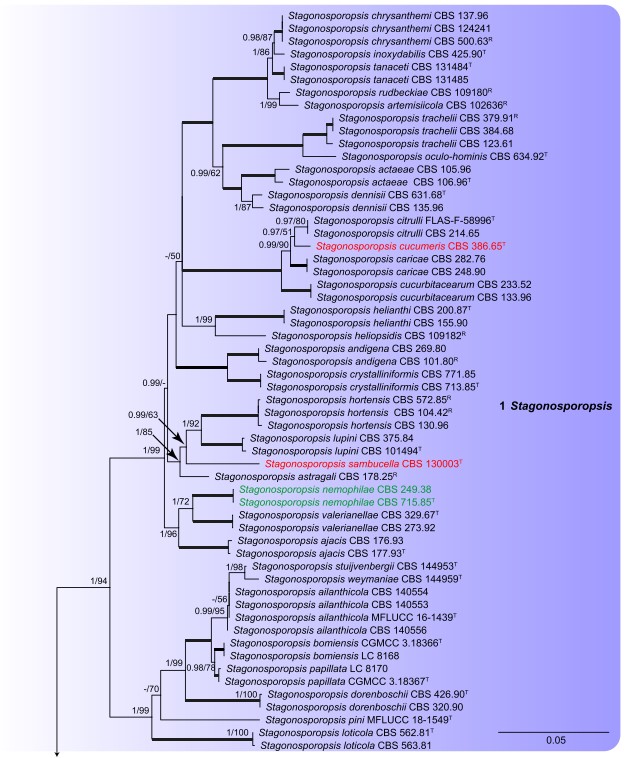
Fig. 1. Phylogenetic tree inferred from a Maximum Likelihood analysis based on a concatenated alignment of LSU, ITS, rpb2 and tub2 sequences of 597 strains representing Didymellaceae and outgroup sequences. The RAxML bootstrap support values (MLBS) above 50 % and Bayesian posterior probabilities (BPP) above 0.80 are given at the nodes (BPP/MLBS). Some of the basal branches were shortened to facilitate layout (the fraction in round parentheses refers to the presented length compared to the actual length of the branch). The scale bar represents the expected number of changes per site. Genera are delimited in coloured boxes, with the genus name indicated to the right. Strains with special status are indicated with a superscript letter after the accession number (R: representative; T: ex-type). The new species are printed in red font and new combinations in green font. The tree is rooted to Coniothyrium palmarum culture CBS 400.71, Neocucurbitaria aquatica culture CBS 297.74 and Pleiochaeta setosa cultures CBS 496.63 and CBS 118.25.
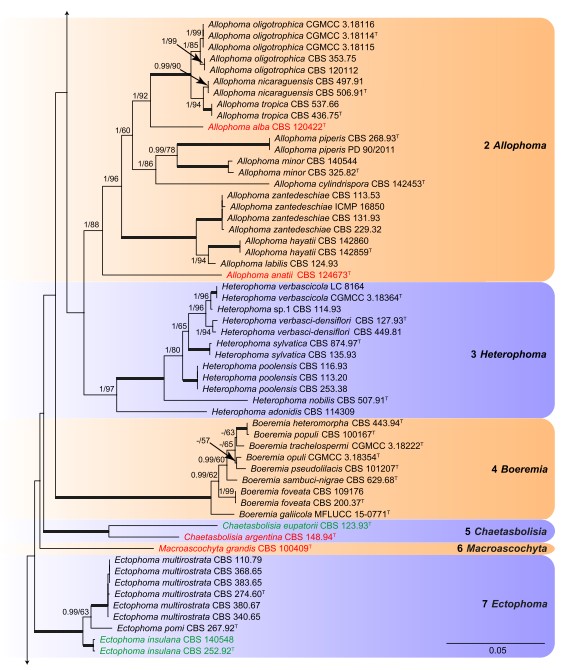
Fig. 1. (Continued).
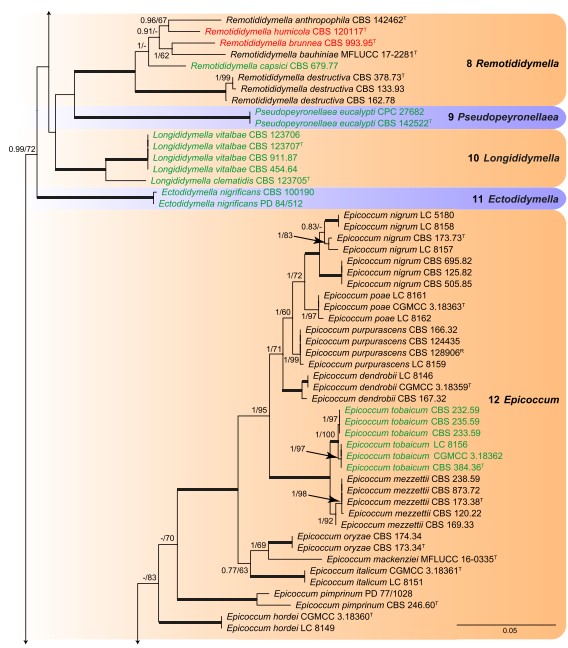
Fig. 1. (Continued).
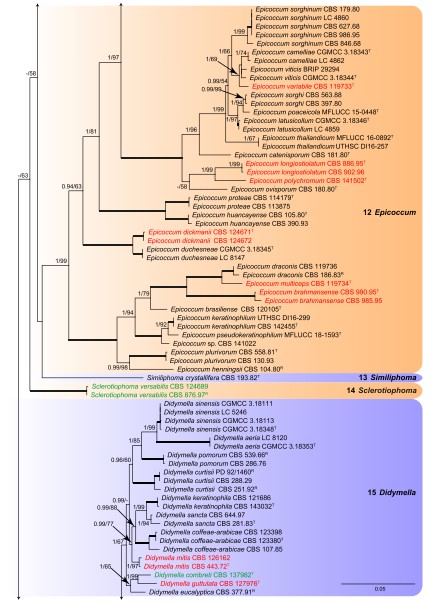
Fig. 1. (Continued).
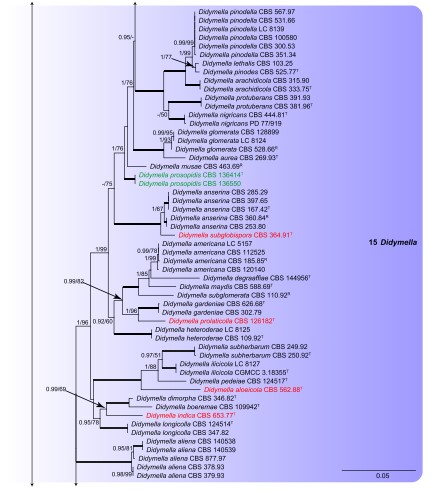
Fig. 1. (Continued).
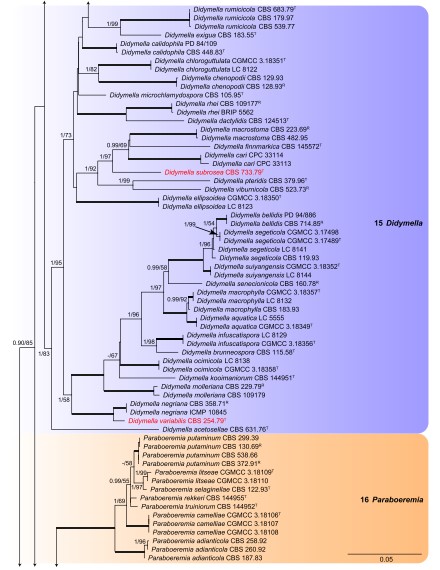
Fig. 1. (Continued).
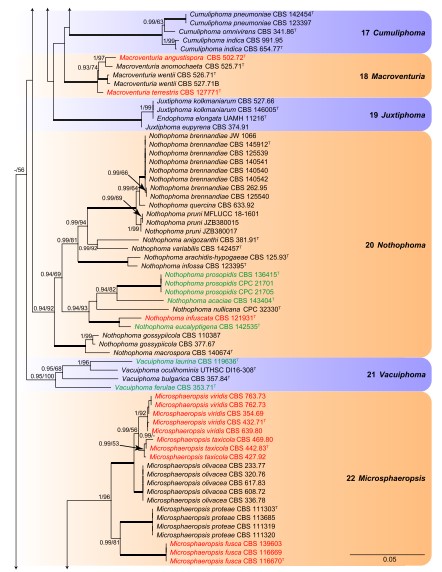
Fig. 1. (Continued).
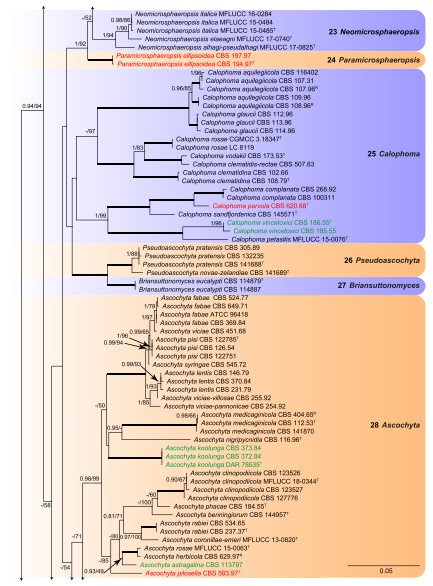
Fig. 1. (Continued).
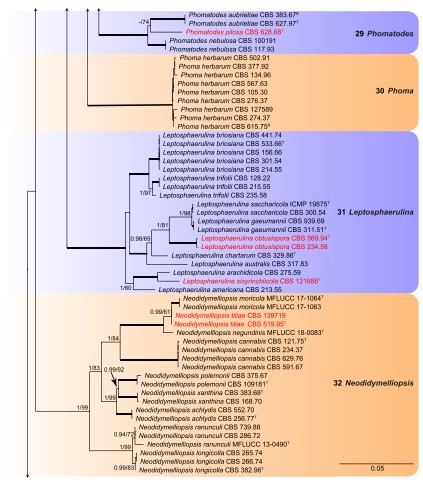
Fig. 1. (Continued).
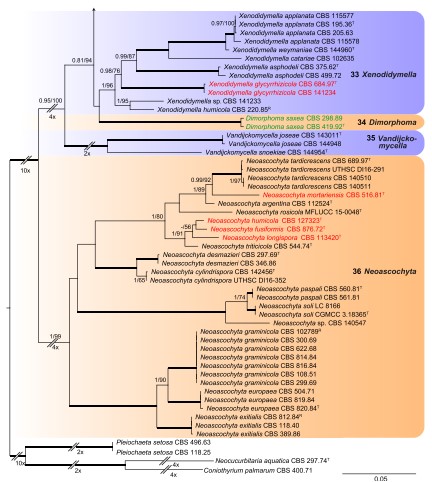
Fig. 1. (Continued).
